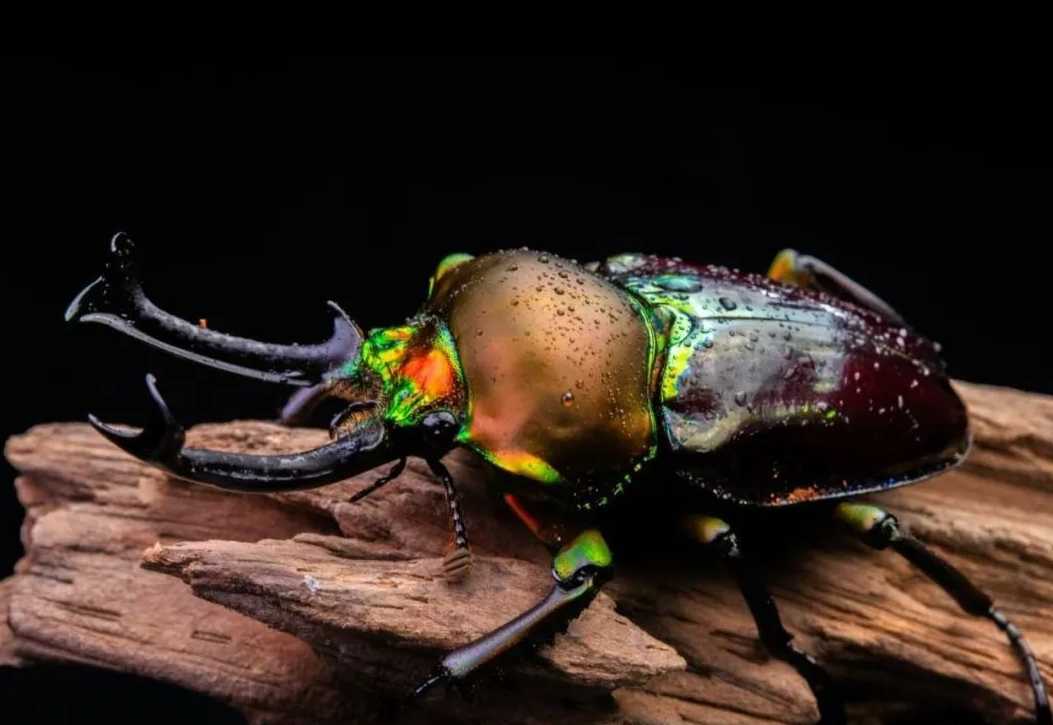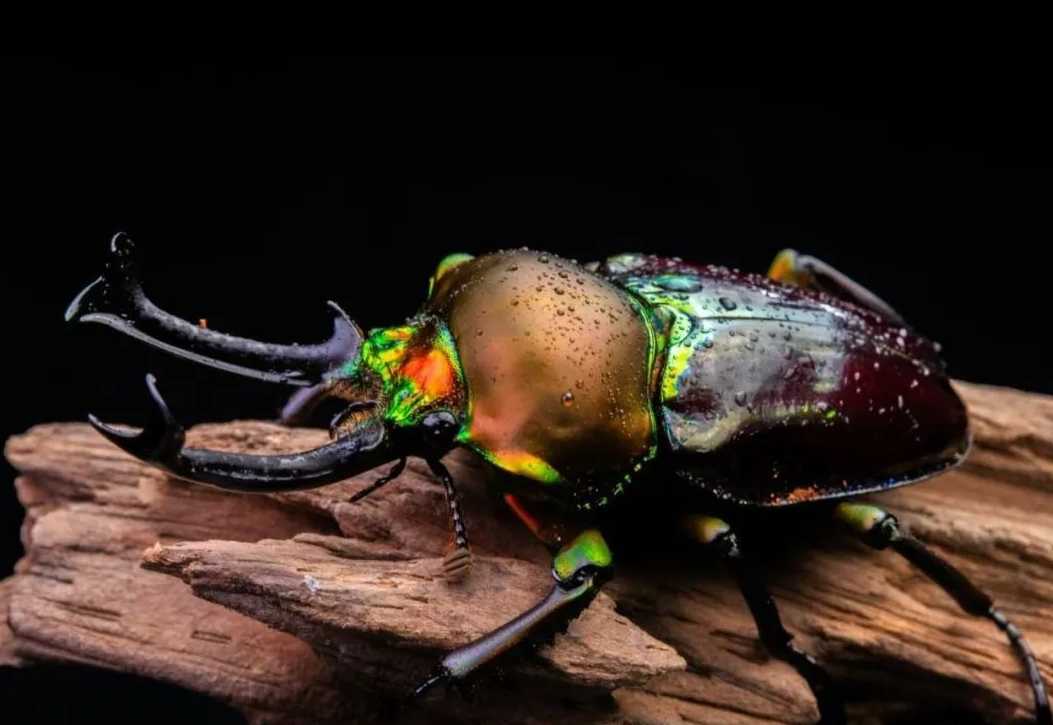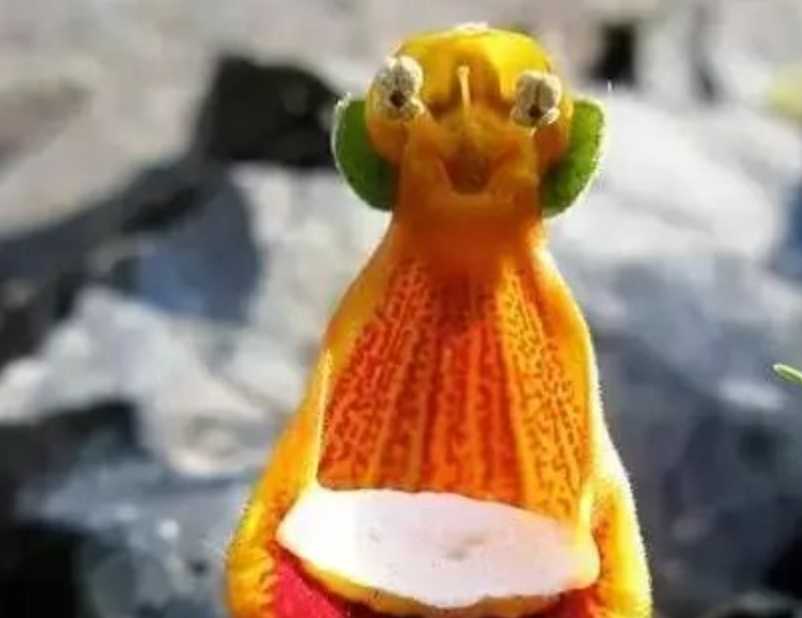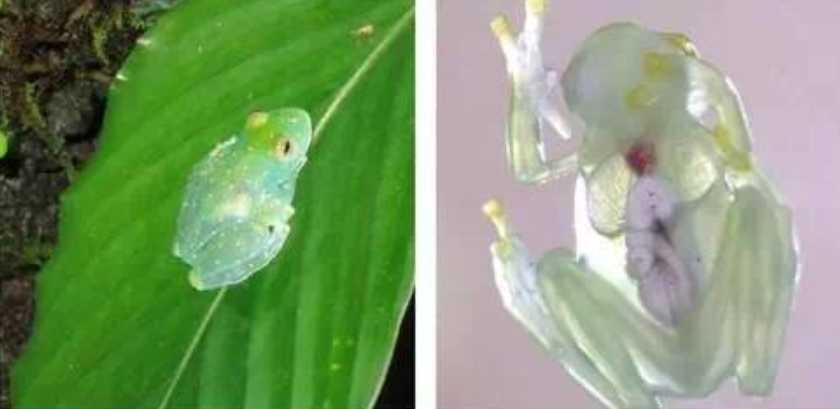The Rainbow Stag Beetle (Phalacrognathus muelleri): Nature's Living Jewel
The rainbow stag beetle, Phalacrognathus muelleri, is a biological marvel renowned for its iridescent metallic hues that rival precious gems. Native to the forests of Australia and New Guinea, this coleopteran species has captivated entomologists and pet enthusiasts alike with its structural coloration—a phenomenon produced by microscopic wing surface ridges that refract light into a spectrum of blues, purples, golds, and greens.

Source: Images from the Internet, if there is any infringement, please contact the removal of
A Masterpiece of Structural Coloration
Unlike pigments, the beetle’s vibrant hues arise from physical structures on its exoskeleton. The elytra and ventral surface feature nano-scale layers that interfere with light waves, creating dynamic color shifts as viewing angles change. This optical adaptation, similar to that of peacock feathers, serves dual purposes: camouflage among rainforest foliage and visual signaling during mating. Adults measure 30–60 mm, with males sporting enlarged mandibles that resemble antlers—though these are used more for display than combat.
Unlike pigments, the beetle’s vibrant hues arise from physical structures on its exoskeleton. The elytra and ventral surface feature nano-scale layers that interfere with light waves, creating dynamic color shifts as viewing angles change. This optical adaptation, similar to that of peacock feathers, serves dual purposes: camouflage among rainforest foliage and visual signaling during mating. Adults measure 30–60 mm, with males sporting enlarged mandibles that resemble antlers—though these are used more for display than combat.
From Forests to Terrariums: A Popular Pet
Thanks to selective breeding, captive populations now exhibit variants in red, black, and purple tones, expanding the natural color palette. Breeders have harnessed the beetle’s robust nature and relatively simple life cycle—larvae feed on decaying wood, while adults survive on nectar and tree sap—to meet demand. Their docile temperament and low maintenance needs have made them sought-after pets, with enthusiasts creating specialized habitats to mimic their native eucalyptus forests. However, wild populations are protected in some regions, emphasizing the importance of sustainable captive breeding.
Thanks to selective breeding, captive populations now exhibit variants in red, black, and purple tones, expanding the natural color palette. Breeders have harnessed the beetle’s robust nature and relatively simple life cycle—larvae feed on decaying wood, while adults survive on nectar and tree sap—to meet demand. Their docile temperament and low maintenance needs have made them sought-after pets, with enthusiasts creating specialized habitats to mimic their native eucalyptus forests. However, wild populations are protected in some regions, emphasizing the importance of sustainable captive breeding.
Ecological and Technological Inspiration
In the wild, Phalacrognathus muelleri plays a crucial role in forest ecosystems as decomposers, aiding in nutrient cycling. Their structural coloration has also inspired materials science: researchers study the nano-scale architecture of their exoskeletons to develop sustainable iridescent coatings and energy-efficient optical devices. From its role as a forest recycler to its status as a living work of art, the rainbow stag beetle embodies the intersection of biological beauty and human fascination—proving that nature’s most vivid creations often hold the key to both ecological balance and technological innovation.
In the wild, Phalacrognathus muelleri plays a crucial role in forest ecosystems as decomposers, aiding in nutrient cycling. Their structural coloration has also inspired materials science: researchers study the nano-scale architecture of their exoskeletons to develop sustainable iridescent coatings and energy-efficient optical devices. From its role as a forest recycler to its status as a living work of art, the rainbow stag beetle embodies the intersection of biological beauty and human fascination—proving that nature’s most vivid creations often hold the key to both ecological balance and technological innovation.
-------- END --------






